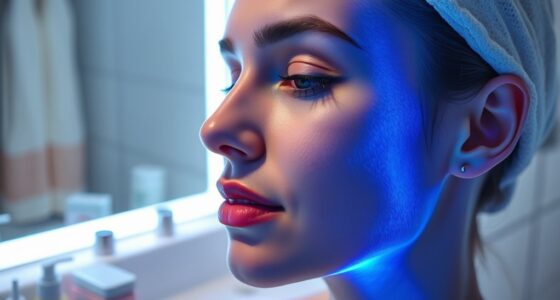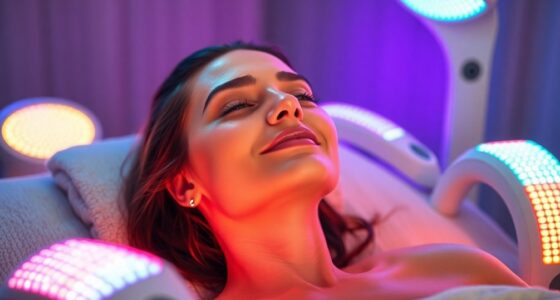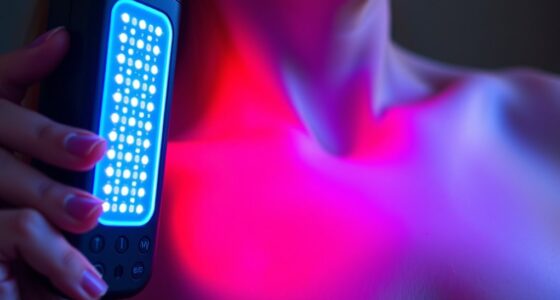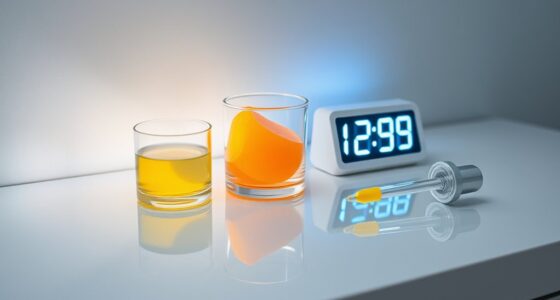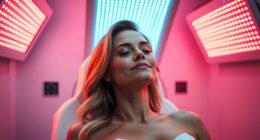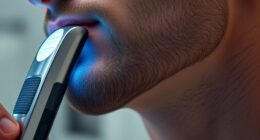When using LED lights, always buy from trusted brands with safety certifications like UL or ETL to prevent fire hazards. Follow the installation instructions carefully and avoid modifying the lights or wiring. Use the correct power sources, keep cords away from flammable materials, and turn off lights when not in use. Regularly check for damage to guarantee safety and prevent accidents. Keep exploring to discover more tips on keeping your space both fun and safe.
Key Takeaways
- Choose LED lights from reputable brands with safety certifications like UL or ETL.
- Follow the manufacturer’s installation instructions and avoid modifying the wiring.
- Use the correct voltage and avoid overloading outlets or connecting damaged cords.
- Keep LED lights away from flammable materials and secure cords to prevent tripping.
- Turn off lights when not in use and regularly check for damage or wear.
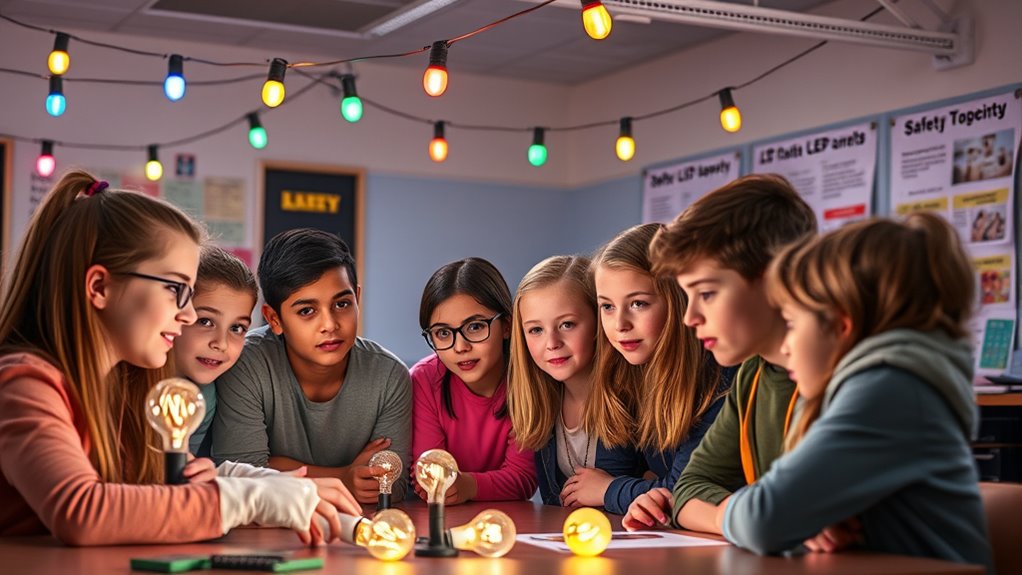
LED lights are becoming a popular choice for teens and tweens who want to personalize their spaces and express their style. As you explore options to brighten up your room or create a fun atmosphere, it’s important to keep safety in mind. While LED lights are generally safe and energy-efficient, knowing the basics can help you avoid potential hazards and enjoy your new lighting setup without worries.
First, always purchase LED lights from reputable brands or trusted stores. Cheaper, off-brand options might seem tempting, but they often lack proper safety testing and could pose fire risks or electrical hazards. Check for certifications like UL (Underwriters Laboratories) or ETL (Intertek) labels, which indicate the product has been tested for safety. When installing LED strips or string lights, carefully follow the manufacturer’s instructions. Avoid modifying the lights or wiring them in ways not recommended, as this can cause short circuits or overheating.
Always buy LED lights from trusted brands and check for safety certifications like UL or ETL.
Make sure your power sources are appropriate for the LED lights you’re using. Use the correct voltage and avoid overloading power outlets. If you’re plugging multiple devices into a single outlet, consider using a surge protector to prevent power surges from damaging your lights or causing sparks. Never connect LED lights to damaged cords or outlets, and if you notice frayed wires, exposed copper, or flickering, stop using the lights immediately and replace or repair them.
Placement is another key safety consideration. Keep LED lights away from flammable materials like paper, fabric, or curtains. Avoid running cords under carpets or rugs where they can overheat or be tripped over. If you’re mounting LED strips on walls or ceilings, ensure they are securely attached with appropriate clips or adhesive strips designed for that purpose. Don’t hang or loop cords where they could be pulled or tugged, which might damage the wiring or cause the lights to fall.
Lastly, be mindful of your environment. Turn off your LED lights when you’re not in the room or before going to bed. Leaving them on for extended periods can sometimes lead to overheating or drain your power supply unnecessarily. Regularly inspect your lights for any signs of wear or damage, and replace them if needed. Understanding different dog breeds can help you select the best type of lighting or accessories suited for your space and lifestyle. By following these safety basics, you can enjoy your LED lights confidently, knowing you’re creating a vibrant, personalized space without risking your safety.
Frequently Asked Questions
Are LED Lights Safe to Use Around Pets and Small Children?
LED lights are generally safe around pets and small children when used properly. You should avoid placing them where pets or kids can chew or swallow the bulbs or wires, as small parts could be dangerous. Also, keep the lights away from water and ensure cords are out of reach to prevent tripping or accidental pulling. With these precautions, LED lights can be a safe, energy-efficient decorating choice for your home.
Can LED Lights Cause Eye Strain or Vision Problems?
Like a gentle tide, LED lights can ripple into your vision, causing eye strain or discomfort if you stare directly or for long periods. Their brightness and flicker, especially if poorly designed, might act like tiny flashes of lightning in your eyes, leading to fatigue or headaches. To keep your eyes safe, use diffused lighting, take breaks, and avoid prolonged exposure, letting your eyes rest like a calm lake after a storm.
How Do I Choose Non-Toxic LED Products for My Room?
To select non-toxic LED products for your room, look for labels that specify they’re free from harmful chemicals like lead, mercury, and phthalates. Opt for LED lights with certifications such as UL or RoHS, which guarantee safety standards are met. Read reviews and product descriptions carefully, and buy from reputable brands. This way, you can enjoy safe, eco-friendly lighting that’s perfect for a healthy, toxin-free space.
Are There Any Heat Concerns With Long-Term LED Usage?
Think of LEDs as tiny suns that stay cool and bright. Long-term LED use generally isn’t a heat hazard because they emit very little warmth compared to traditional bulbs. This means you don’t have to worry about your room turning into a sauna. Just make certain your LED fixtures are properly ventilated and rated for safety. With proper use, these energy-efficient lights will shine safely and steadily, keeping your space cozy and cool.
Do LED Lights Emit Any Harmful Radiation or Chemicals?
LED lights do not emit harmful radiation like UV or IR rays, making them safe for everyday use. They also don’t release chemicals or toxins that could pose health risks. Unlike some older lighting options, LEDs are energy-efficient and produce minimal heat. Just make certain you use quality products and follow safety guidelines, and you’ll enjoy their benefits without worrying about harmful chemicals or radiation exposure.
Conclusion
Now that you know the safety basics of LED lights, you’re like a shining star ready to light up your world responsibly. Think of LEDs as tiny guardians, guiding your adventures without burning out. By staying safe, you keep your glow bright and your journey smooth. So, embrace the sparkle with confidence—your bright future is just a flicker away, ready to shine as brilliantly as you do!


